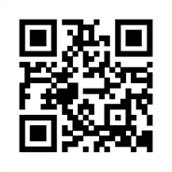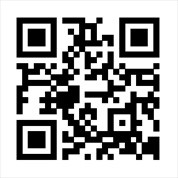Guangzhou Hengli Stage Lighting Co., Ltd.
Tel: 020-36372792
Fax: 020-36372251
Technical Support: 13660827877
Contacts: Mr. Liang
Business manager: 13660378626
Contacts: Xiaoping
Business manager: 13640836255
Contacts: Miss Lv
E-mail: admin@henglilight.com
Website: crissangel.cn
Addr.: No.10,Xiqi Industrial Zone, Yagang, Baiyun District, Guangzhou
The success of theater lighting design is based on the proper handling of stage lighting. The stage lighting not only lightens the actor, allows the audience to see the facial expressions, expressions and movements, but more importantly, fully utilizes the lighting technology and mobilizes the lighting operation to strengthen the artistic effect and enable the audience to have an immersive feeling. Stage lighting installation location, function and lighting configuration The stage lighting is divided into two types according to its use function: dimmable dimming loop; non-dimmable direct loop.
Stage lighting
a. General lighting: refers to the top light and the extended stage as a part of the top light hanging lighting ring, as well as the lighting stage lighting on the grape frame, flyover.
b. Intensive lighting: surface light, slap light, column light, side light, foot light, flowing light and low-angle surface light of the extended stage, inner (outer) side light, turntable flow light, and music light set inside the music pool Low voltage outlet.
c. Decorative Lighting: Refers to the sky light, ground light and laser effects used on the stage, chasing light, mobile music fountains and various types of computer lights.
Stage lighting control system structure module
1. Human-machine interface module
The function of the man-machine interface module is mainly to receive the control instructions of the control personnel, and generally can be realized with a simple industrial control panel. After receiving the instruction, the module does not translate the instruction and transmits the key information directly to the master module through the RS485 bus.
2. Master module
The master computer is the core part of the entire lighting control system and is responsible for the connection between the upper control interface and the underlying hardware control module. The master computer is translated after receiving the key information sent by the control module to form a binary control instruction; then the master controller forms a complete frame of data according to the received instruction and the related control module address, and transmits the data through the RS485 bus. On the downstream bus, each underlying control module then acquires its own data by address matching.
3 bottom control module
The bottom level control module is a hardware device that directly controls the stage lighting action. Since the number of stage lights is generally more, the number of control modules is generally between 10 and 20. All control modules are affiliated with the same bus and are programmed independently of each other. When the master sends data to the bus, all control modules receive data information and parse out their own instructions and execute them according to the address information contained in the frame structure
The three modules communicate with each other using the RS485 bus and transmit data at a fixed baud rate. The main functions of the stage lighting control system control module are two aspects: First, communication with the master computer, receiving instructions from the upper level. The second is to control the hardware circuit to control the lighting action according to the instructions. The following describes the two modules separately.
1. Communication method selection
Since the control signal is relatively simple, the serial communication method is used here. This method is more convenient to use, requires less peripheral devices, and can be freely selected in half/full duplex mode. The most important of the asynchronous methods is the baud rate setting. If it is too high, it will increase the burden on the SCM, or even cannot be achieved. If it is too low, it will affect the response speed of the entire operation.
2. Transmission standard selection
At present, there are many transmission standards, but each has its own advantages and disadvantages. Since the lighting system is used in a studio, there will be many interferences from various audio and electrical appliances. Therefore, the selected transmission method should be stronger in anti-interference. From this point of view, when the communication distance is several tens of meters to 1000 meters, the use of RS485 bus transmission is ideal. The 485 bus utilizes two transmission lines, balanced transmission and differential reception, so it has the ability to suppress common-mode interference, plus the receiver has a high sensitivity, can detect voltages as low as 200mV, so it can greatly enhance the anti-interference ability during transmission. The transmission signal can be recovered beyond the km.
The RS485 bus is easy to use, and a multi-station networking can be used to form a distributed system with a pair of twisted pair cables. It is widely used in engineering projects due to its simple equipment, low price, and long distance communication.
3. Transceiver selection and use
The 485 level is transmitted on the 485 bus, and the microcontroller and the main control microcomputer can only recognize the TTL level. In this way, there must be a dedicated chip design switching circuit between the two, which is the transceiver. There are many kinds of transceivers, and different levels can be converted according to needs. In applications, in order to reduce the interference between communication circuits and other circuits, there must be an isolation stage. Although it is possible to use the higher-end 485 transceiver with isolation level directly, it is better to design the isolation circuit by itself considering the price.
Here the use of optocoupler devices, separate power supply means to achieve isolation. In the use of M ax483 is to pay attention to the control of the enable side. The transceiver is in the receive state only with /RE =0, and is portable, avoiding unnecessary duplicate work. The module function management layer and the hardware driver and basic function function interface layer in the module belong to Opentv middleware. The module function management layer is a function that is written in accordance with a certain middleware function interface standard for audio, video, and channel operation management and control in order to facilitate the writing of a user application program.
The driver and basic function interface layer is the bottom part of OpenTV middleware. This level of software is written in accordance with the specific hardware driver to make corresponding changes, the purpose is to provide a unified module to drive the function of the management interface.
4. Operating system and hardware driver layer
The operating system adopted by this system is pSOS; the hardware driver layer mainly provides hardware drivers for each hardware module. The main drivers include: Kernel module, mainly responsible for providing operations on the process, such as the creation and deletion of processes; interface module, including IC interface operation control, RS-232 serial communication, smart card control, etc.; audio module; video module; OSD module; demux module; decoding module; Flash driver module; TUNER driver module.
The last step is the debugging of the set-top box system: The software of this system is compiled on the basis of the pSOS compiler. The entire test block diagram is shown in Figure 3. The system uses a TS stream generator as a set-top box debug TS source.
The TS stream is modulated into the channel by the QAM modulator, and the QAM signal is sent to the front end of the set top box for QAM demodulation and then sent to the system board for source decoding. The TS stream can also be fed directly through the interface in the system board to enable separate debugging of the source decoding. The test of the system personal computer was conducted on the PC + WINDOWS2000 platform. The system running software is executed in the pSOS real-time operating system environment.
The compiled executable file is downloaded from the serial port to the RAM on the hardware platform by simulating RoM. The system then reads out and executes the program from a fixed address in RAM. Since the hardware platform does not provide a network port, the on-line debugging function provided by pSOS cannot be implemented. The debugging information can only be obtained by executing the output information during the program.


